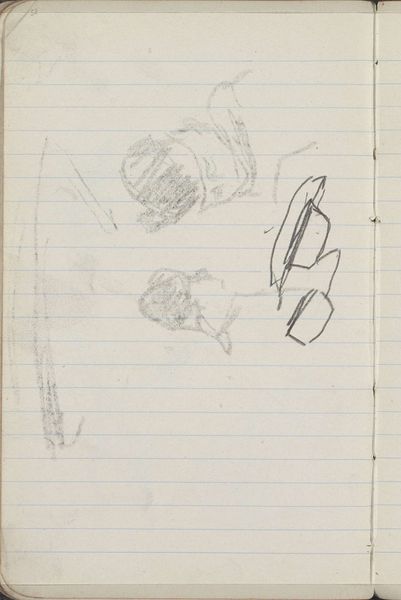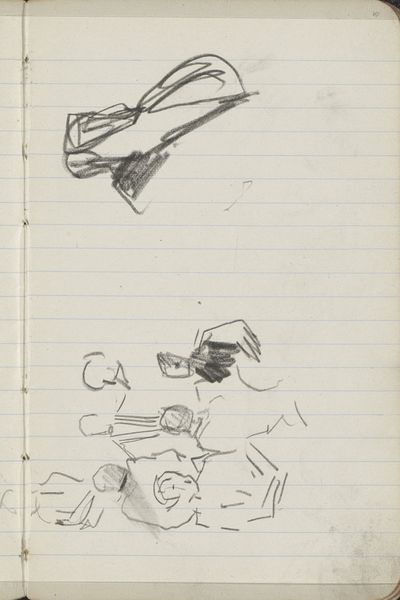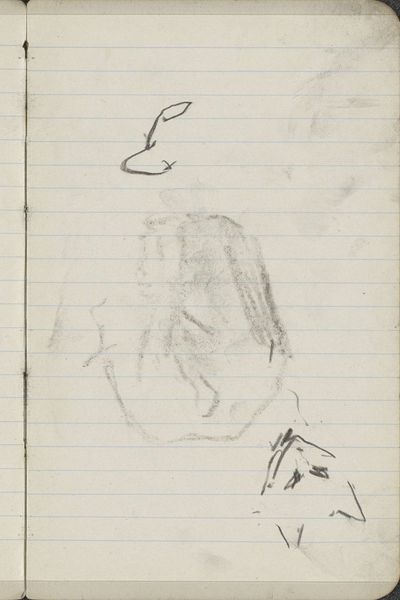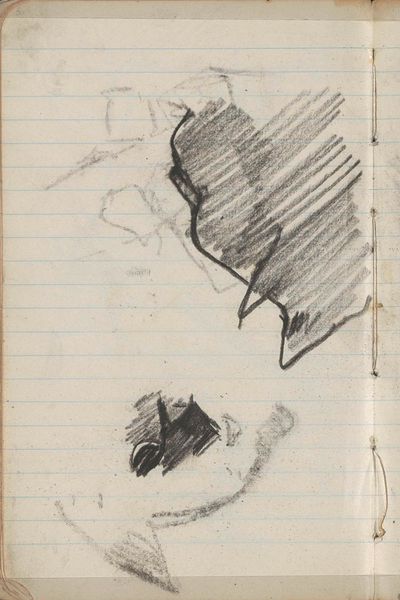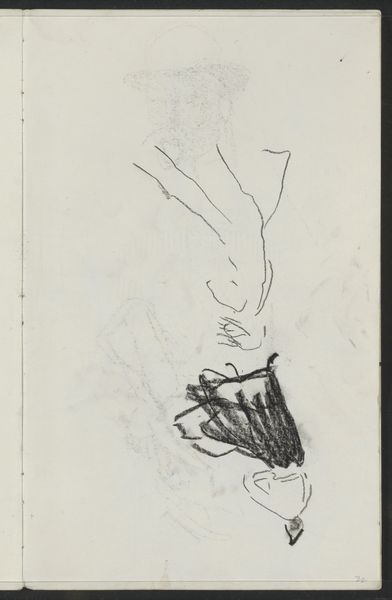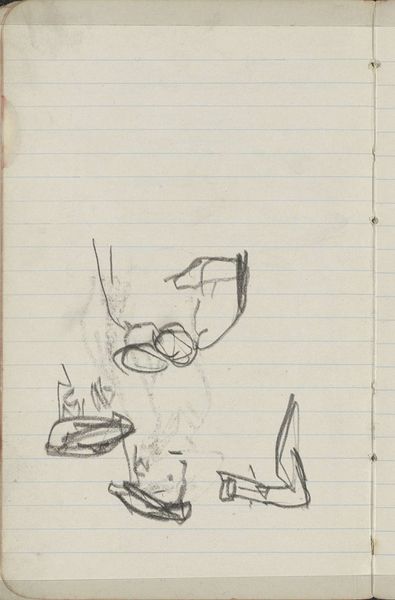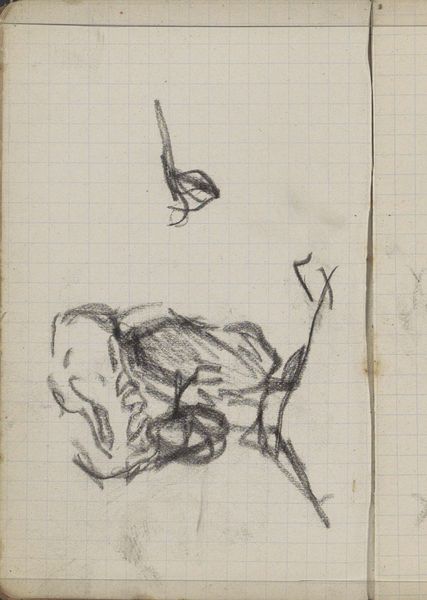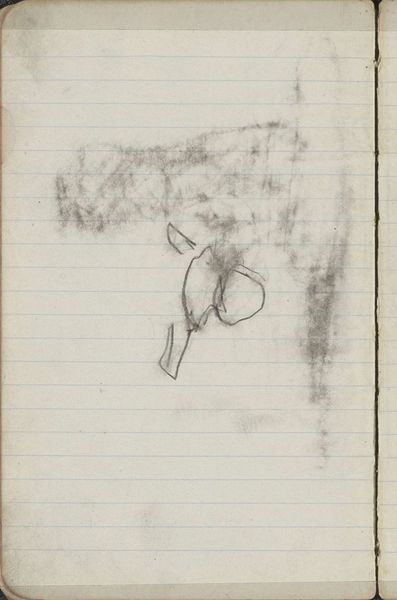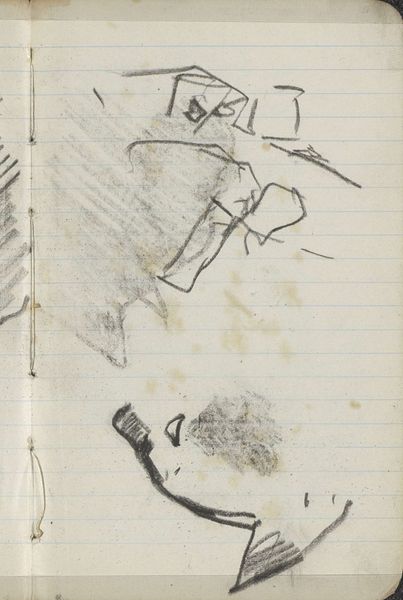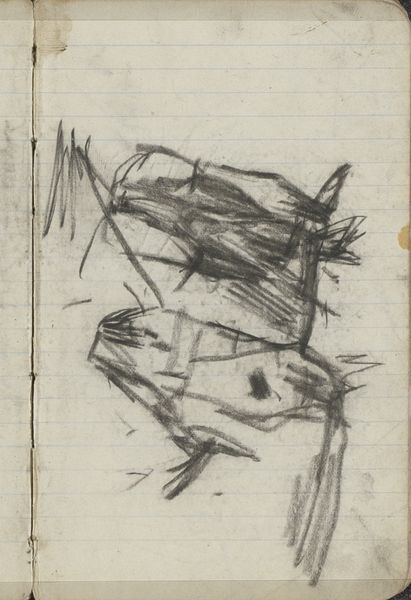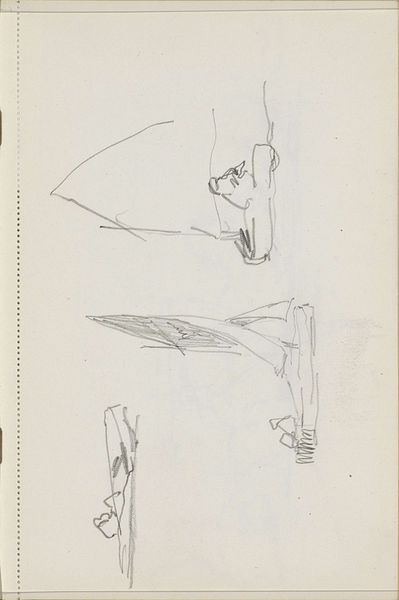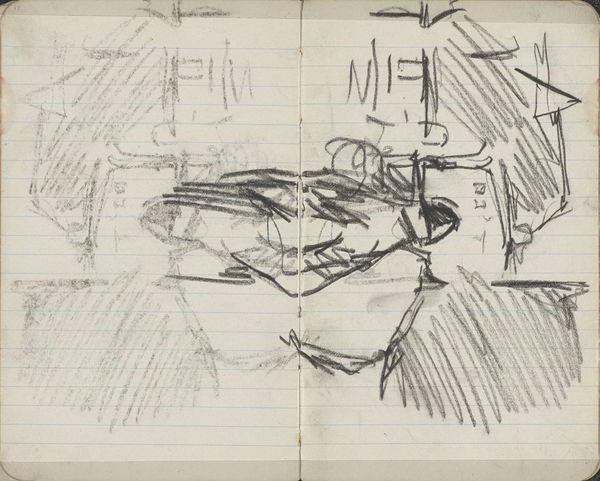
Copyright: Rijks Museum: Open Domain
Curator: Looking at George Hendrik Breitner’s "Twee figuren", dating from around 1890 to 1900, I immediately think about how quickly the figures are drawn. Editor: It feels raw and unfinished, doesn't it? Almost voyeuristic, like a snatched glimpse of everyday life, perhaps from a bustling cafe scene or the like. The stark contrast of heavy pencil against lined paper only intensifies that feeling. Curator: Breitner’s style definitely leaned into that fleeting moment; an aesthetic that’s rooted in seeing, but not necessarily knowing, isn't it? It looks as if he captured impressions without refining, allowing for geometric and figural tension. Editor: I agree completely. Considering the socio-political undercurrents of the era, especially in a city like Amsterdam, one wonders what social strata these figures belonged to. Was Breitner attempting to democratize representation, or simply observing the stark inequalities? The fact that these figures remain anonymous lends to that ambiguity. Curator: These symbols are left open for the viewer to complete, prompting personal narrative from a communal visual vocabulary. Editor: Indeed, it's fascinating how a simple pencil sketch on lined paper, a medium readily available even then, could serve as a canvas for complex social commentary. The banality of the lined paper almost emphasizes the humanity he captures within its grids, framing everyday figures in this everyday sketch. Curator: Considering his impressionistic leanings, Breitner seemed to see beauty, or at least interest, in even the mundane aspects of urban life, a focus that mirrors the shifts occurring in the late 19th-century. Editor: Yes, it reflects a period grappling with modernity, where artists actively redefined what was worthy of depiction. "Twee figuren" perhaps underscores that, that the subjects of drawings need not be solely nobility or idealized figures. Curator: So many possibilities bubble up through this rapid-fire rendering; an emotionality held by a web of loose graphite. Editor: It makes you wonder about all the stories sketched quickly, destined never to be fully rendered, yet leaving traces on history's page all the same.
Comments
No comments
Be the first to comment and join the conversation on the ultimate creative platform.
